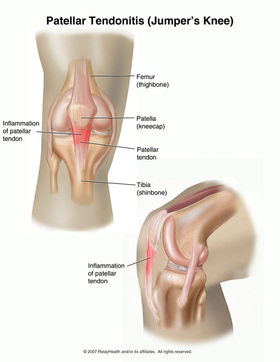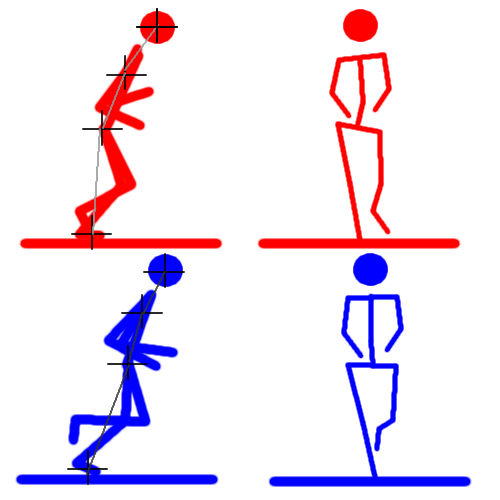Charlie,
Do you recommend squats for individuals with patellar chondromalacia?
How active is the patellar chondromalacia?
How "off track" are the quads pulling your patella (kneecap) to the side?
Or is the problem not your quads, but a weak gluteus medius that lets the pelvis tip down?
Are you also a runner, and have the typical runner's muscle imbalance of stronger hamstrings than quads?
THE BEST QUAD EXERCISES FOR RUNNERS
http://www.livestrong.com/article/452997-the-best-quad-exercises-for-runners/
I ask these questions not to give you a hard time, but to help understand that there are different exercises recommended for different causes of patellar chondromalacia.
Thus, if you have clearly have severely abnormal tracking, and active inflammation, you don't want to be doing squats right now, even though at some point the squat would be an ideal exercise to maintain proper tracking and prevent a recurrence.
So you may have to start with exercises like those below:
-
http://tophealthfaq.com/wp-content/uploads/2013/02/Patellofemoral-Pain-Syndrome-Exercises.jpg
These include more specific exercises to address the specific muscle imbalances that YOU have.
So an exam and selection of the best exercises would be the best course of action.
I mention this not only to prevent you having even more problems, but to understand why some sites will recommend squats to maintain quad and glute strength to prevent a recurrence.
CHONDROMALACIA PATELLA EXERCISES: LIVESTRONG
"Box Squat
The box squat is performed with the feet spread wide apart and the shins perpendicular to the floor throughout the exercise. With a bar across your shoulders, push your hips back to a box between 12 and 20 inches in height. Tap the box gently, and stand back up. This allows the hips to be loaded without loading the knee excessively. Perform the exercise sitting to a progressively lower box for two to four sets of five to eight repetitions."
- Read more:
http://www.livestrong.com/article/415235-chondromalacia-patella-exercises/#ixzz2O7EHWIrV
So if you can "get over the hump" of current painful patellar chondromalacia, the squat - which works all the muscles of the legs, glutes, back/core and the muscles that connect the legs to the back/core bilaterally - then you may have a GREAT exercise.
But I just urge caution about the above points rather than launching into squats now.
[Perhaps Posture Guy, who is kind enough to comment on muscle imbalances here on Talk Tennis will comment.]








